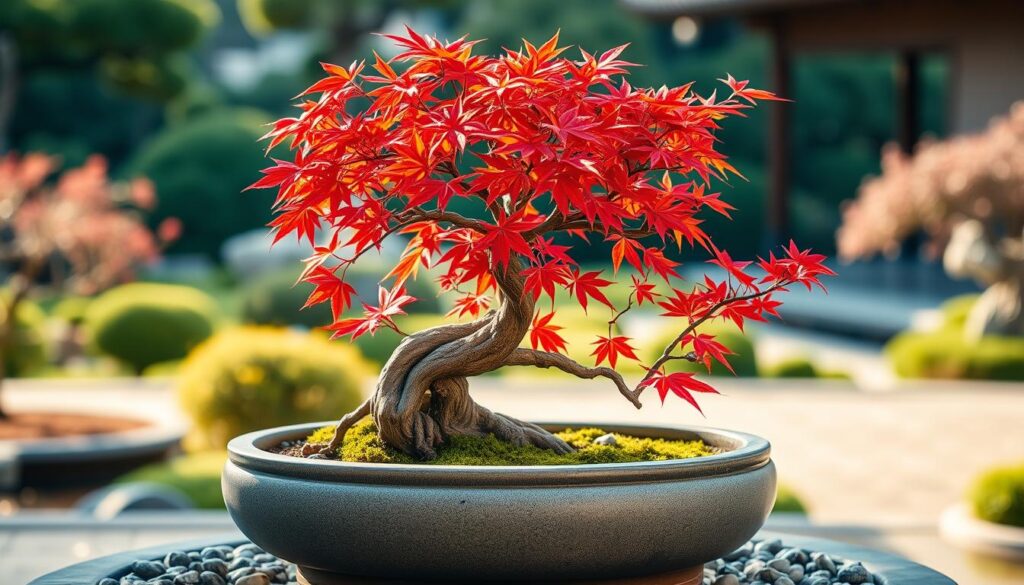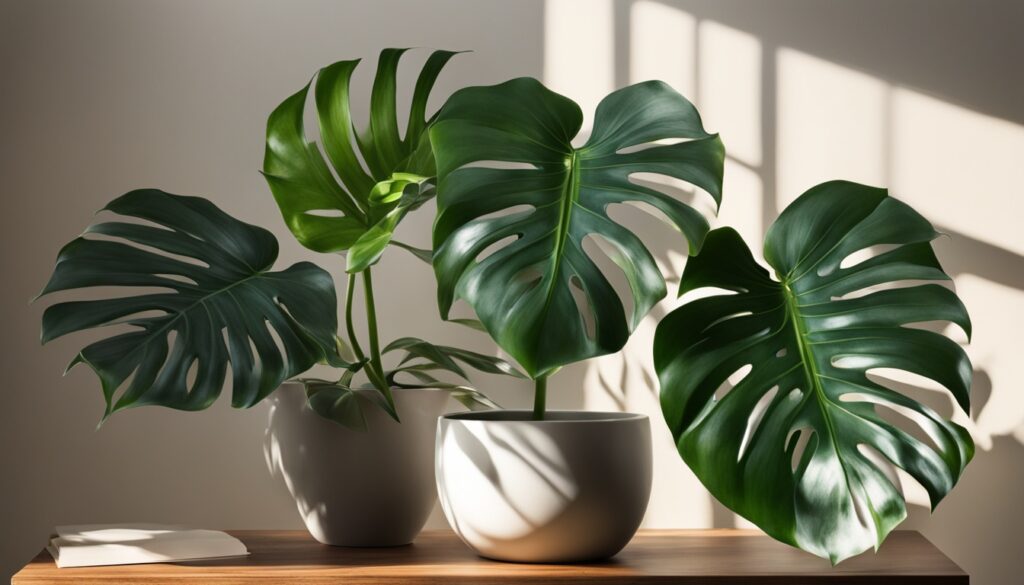Ever wondered about the secrets of a bonsai maple tree? These tiny wonders come from Japan’s lush forests. They change colors with the seasons, amazing everyone who sees them. But what makes a top-notch Japanese maple bonsai special?
Our nursery is proud of our Acer Palmatum bonsai collection. Each tree shows the skill of bonsai art. They go from bright green in spring to fiery colors in fall. These small trees show nature’s beauty, touching our hearts and minds.
Key Takeaways
- Discover the cultural significance and distinctive characteristics of Japanese maple bonsai
- Explore our premium selection of Acer Palmatum specimens, each one a unique masterpiece
- Learn about the seasonal transformations that make maple bonsai a year-round delight
- Understand the specialized techniques and care required to cultivate and maintain these miniature marvels
- Uncover the investment value of owning a rare and well-established maple bonsai tree
Understanding Japanese Maple Bonsai Essentials
The world of maple bonsai trees is deeply rooted in Japan’s rich culture. These small wonders, known as Acer Palmatum, are loved for their delicate leaves and graceful branches. Their colors change with the seasons, from green in spring to red in autumn.
The Cultural Significance of Acer Palmatum
In Japan, the acer palmatum bonsai is very special. It symbolizes patience, harmony, and the balance between nature and humans. These trees have been carefully grown and shaped for centuries, showing the values of perseverance and respect for nature.
Characteristics of Japanese Maple Species
There are many types of maple bonsai trees, each with its own look and feel. Some have leaves that look like lace, while others have leaves that remind you of maple trees. Each type has its own beauty that attracts bonsai lovers from all over.
Seasonal Color Changes in Maple Bonsai
The changing colors of Japanese maple bonsai are truly magical. They start with green or bronze in spring, then turn to deep green in summer. In autumn, they show off vibrant reds before the leaves fall. This cycle of change shows the beauty and strength of these trees.
| Bonsai Tree Variety | Leaf Color Changes | Ideal Growing Conditions |
|---|---|---|
| Acer Palmatum ‘Dissectum’ | Spring: Bronze, Summer: Green, Autumn: Crimson | Partial Shade, Well-Drained Soil |
| Acer Palmatum ‘Atropurpureum’ | Spring: Deep Purple, Summer: Purple, Autumn: Brilliant Red | Full Sun, Moist, Well-Drained Soil |
| Acer Palmatum ‘Katsura’ | Spring: Orange, Summer: Green, Autumn: Golden Yellow | Partial Shade, Moist, Humus-Rich Soil |
“The Japanese maple bonsai is a living work of art, a testament to the beauty and resilience of nature, and a reflection of the enduring human spirit.”
Premium Bonsai Maple Tree for Sale: Our Collection
At our nursery, we’re proud of our wide range of premium Japanese Maple bonsai trees. You’ll find everything from the elegant Mountain Maple to the vibrant Red Deshojo Maple and the graceful Trident Maple. Our selection is perfect for buy bonsai maple, bonsai maple nursery, and bonsai maple online fans.
We use careful methods like seed sowing, grafting, and air-layering to grow our bonsai maple trees. This ensures we always have top-quality trees for you. Whether you’re new to bonsai or have years of experience, we have something for everyone. Our prices range from affordable to very high-end, with some trees costing thousands of pounds.
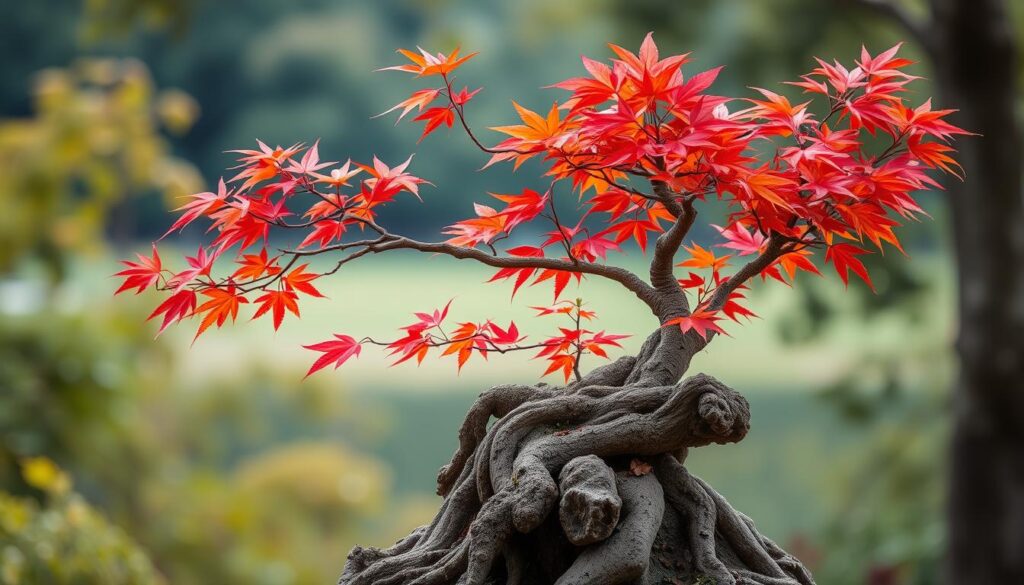
Experience the beauty of these living art pieces with our help. Our team will guide you in picking the perfect bonsai maple for your collection. Browse our wide selection and find the buy bonsai maple that will amaze you and enhance your outdoor area.
Types of Japanese Maple Varieties Available
At our nursery, we have a wide range of Japanese maple bonsai varieties. Each one has its own special look and feel. From the tough Mountain Maple to the bright Red Deshojo Maple and the unique Trident Maple, we have something for everyone.
Mountain Maple Specimens
The Mountain Maple, or Acer spicatum, is loved for its toughness and ability to adapt. It does well in many soils and climates, making it great for both indoor and outdoor trees. Its small size and beautiful leaves make it a favorite among bonsai fans.
Red Deshojo Maple Varieties
The Red Deshojo Maple is famous for its bright spring colors. It starts with deep red leaves and turns green later. This maple is a highlight in any bonsai collection, with its eye-catching colors.
Trident Maple Options
The Trident Maple is known for its unique leaves and detailed bark. It’s versatile and can be shaped into many bonsai styles. Its ability to grow well in different conditions makes it a favorite among bonsai lovers.
“The Japanese Maple is a very sturdy tree species but can be affected by sap-sucking insects known as aphids in spring.”
We offer a wide range of Japanese Maple varieties to meet our customers’ needs. Whether you like the Mountain Maple’s gentle look, the Red Deshojo’s bright colors, or the Trident Maple’s design, we have the perfect bonsai for you. It’s perfect for adding beauty to your outdoor or indoor space.
Specimen Japanese Maple Pricing Guide
The world of bonsai maple trees is full of beauty and elegance. Whether you’re a seasoned collector or just starting, prices vary a lot. Each japanese maple bonsai has its own unique qualities and cultural value.
Our premium collection of bonsai maple tree for sale has many options. A beautiful Specimen Japanese Maple Bonsai with a strong trunk costs £3,950. A stunning Specimen Koto-Hime Japanese Maple Bonsai is priced at £4,250.
| Bonsai Specimen | Price |
|---|---|
| Specimen Japanese Maple Bonsai | £3,950 |
| Specimen Koto-Hime Japanese Maple Bonsai | £4,250 |
These buy bonsai maple trees are works of art. They take years of care and training. They’re perfect for adding beauty to your home or growing your bonsai collection.
“The Japanese Maple is a true masterpiece of nature, its vibrant foliage and graceful form capturing the essence of the art of bonsai.”
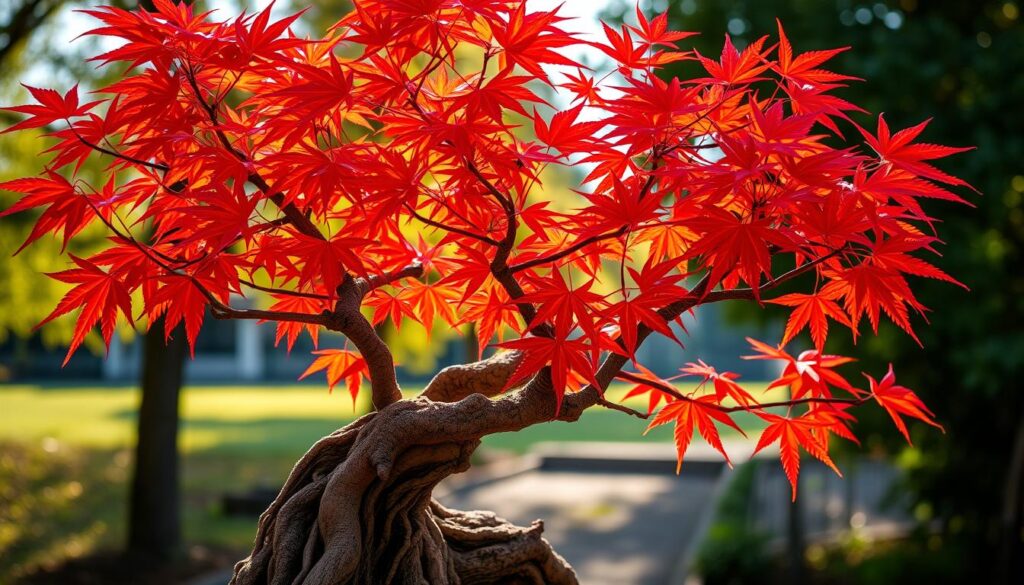
Cultivating and Growing Japanese Maple Bonsai
At our bonsai nursery, we use many techniques to grow amazing maple bonsai trees. We sow seeds, graft, and air-layer to get top-quality acer palmatum bonsai trees. Turning these trees into art takes a lot of care and knowing how they grow.
Propagation Methods
We use different ways to grow more bonsai maple trees. We sow seeds, graft, and air-layer to make new plants. Each method needs special care and timing for the trees to grow strong and healthy.
Refinement Techniques
Turning field-grown trees into bonsai is a careful process. We prune, wire, and shape them. Our team watches how each tree grows and shapes it to look just right. This makes our acer palmatum bonsai trees truly special.
Field Growing Process
We start growing maple bonsai trees by picking seedlings or young plants. We plant and care for them in our fields. This helps them grow strong and prepares them for shaping.
“Cultivating maple bonsai trees is a true art form, requiring patience, skill, and a deep understanding of these remarkable plants. At our nursery, we take great pride in every step of the process, from propagation to refinement, to ensure our customers receive the finest acer palmatum bonsai specimens.”
| Propagation Method | Timing | Considerations |
|---|---|---|
| Seed Sowing | Immediate | Requires patience as seedlings develop over several seasons |
| Grafting | Spring | Allows for specific cultivar selection and trunk development |
| Air-Layering | Late Spring | Produces new plants from existing specimens |
Seasonal Care and Maintenance Requirements
Taking care of a indoor bonsai maple or outdoor bonsai maple needs attention to seasonal needs. As seasons change, your japanese maple bonsai will need different care. It’s important to keep up with these changes to keep your tree healthy and long-lived.
In spring, protect your indoor bonsai maple and outdoor bonsai maple from late frosts. As it gets warmer, water more and give them partial shade. Autumn is the best time for pruning to shape your japanese maple bonsai. Winter requires keeping your tree safe from extreme cold.
Year-round, your indoor bonsai maple, outdoor bonsai maple, and japanese maple bonsai need regular fertilizing, pest control, and the right amount of water. By meeting their specific needs, your bonsai trees will flourish and bring joy for many years.
“Bonsai trees are living, breathing works of art that require a delicate balance of care and attention throughout the year.”
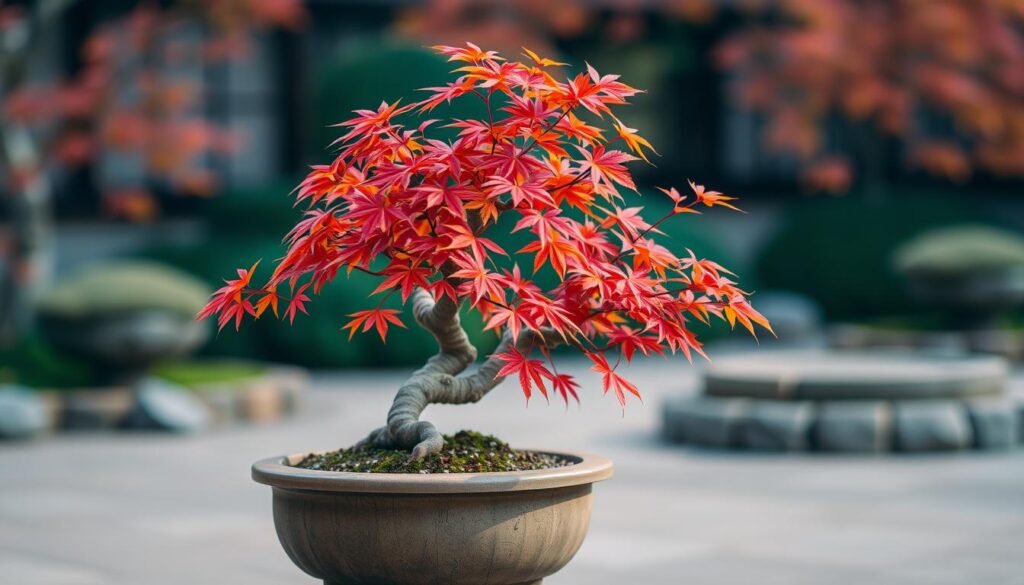
Experts at Bonsai Tree Care say Deshojo Acer bonsai trees in the UK need repotting every 2-3 years in spring. They also suggest using a mix of akadama, pumice, and lava rock for the best growth.
- Watch for pests like aphids, spider mites, and scale insects to keep your indoor bonsai maple, outdoor bonsai maple, and japanese maple bonsai healthy.
- Protect your Deshojo Maple bonsai from harsh winter frosts in the UK. You can place them in a sheltered spot or cover them.
- Prune and train your japanese maple bonsai regularly to keep it looking good.
By understanding the seasonal needs of your indoor bonsai maple, outdoor bonsai maple, and japanese maple bonsai, you can help them thrive. They will continue to amaze you with their beauty.
Popular Japanese Maple Cultivars
Among the many dwarf japanese maple trees, Kotohime and Kiyohime are especially loved. They are small and have delicate leaves. These traits make them a beautiful addition to any bonsai collection.
The Seigen variety is known for its bright red leaves in spring. It’s a sight to see. On the other hand, Shishigashiri has leaves that curl in a unique way. This adds a playful touch to any bonsai setup.
| Variety | Characteristics | Cultivation Tips |
|---|---|---|
| Kotohime | Compact growth habit, small leaves | Requires regular pruning to maintain shape |
| Kiyohime | Miniature size, delicate foliage | Sensitive to environmental changes, needs careful monitoring |
| Seigen | Vibrant red spring foliage | Responds well to appropriate fertilization and sunlight exposure |
| Shishigashiri | Unique curled leaf edges | Thrives in well-draining soil and with consistent watering |
These special japanese maple bonsai varieties are truly eye-catching. But, it’s worth noting that regular Acer palmatum varieties are often more hardy. They are great for both beginners and seasoned bonsai lovers.
Indoor vs Outdoor Maple Bonsai Care
Choosing between indoor or outdoor care for maple bonsai trees greatly affects their health. Most Japanese maple bonsai do well outdoors. But, some can also thrive indoors with the right conditions.
Outdoor maple bonsai trees enjoy natural seasons and sunlight. Yet, they need protection from extreme weather. This includes frost, winds, and heat to avoid damage.
Indoor bonsai maple trees need careful attention to light, humidity, and temperature. They don’t see full seasonal changes. But, with proper care, they can add beauty to your home.
| Characteristic | Outdoor Maple Bonsai | Indoor Maple Bonsai |
|---|---|---|
| Light Exposure | Full spectrum of natural sunlight | Bright, indirect light or supplemental grow lights |
| Temperature | Seasonal fluctuations | Constant, controlled temperature (60-75°F) |
| Humidity | Natural humidity levels | Increased humidity (60-80%) |
| Watering | Responsive to weather conditions | Consistent, monitored watering schedule |
| Maintenance | Regular pruning and training | Meticulous attention to detail |
The choice between indoor bonsai maple or outdoor bonsai maple depends on your preferences and space. Both can thrive with the right care. They add natural beauty to your life.
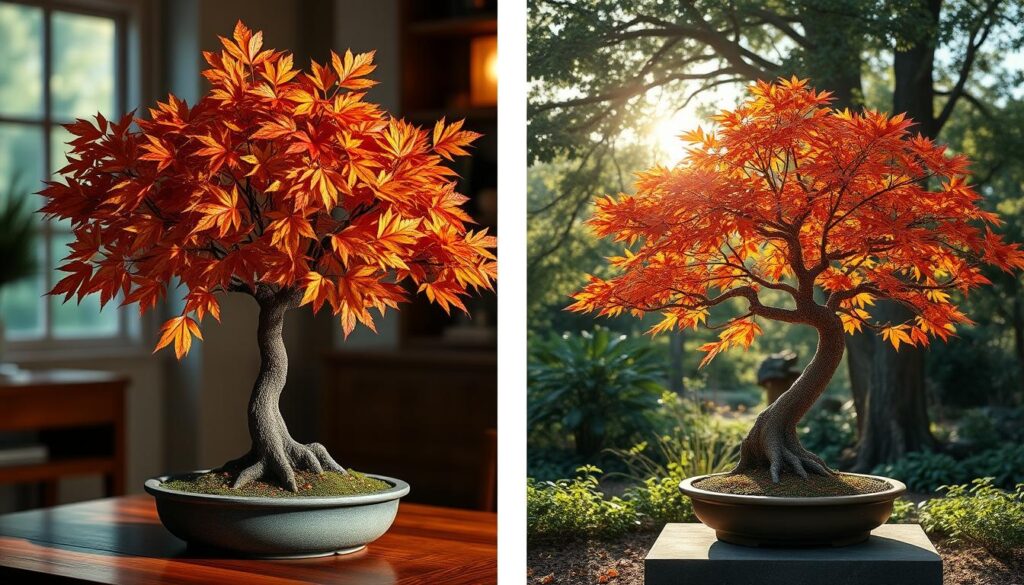
Selecting Your Perfect Maple Bonsai Specimen
Choosing the right bonsai maple is key. The quality of the trunk and the branches’ structure are crucial. These features ensure your bonsai maple tree for sale is elegant and harmonious, just like Japanese maple bonsai art.
Evaluating Trunk Quality
The trunk is the heart of a bonsai maple. It should taper nicely from base to top. The bark should be textured and have a unique pattern, enhancing the tree’s beauty.
Assessing Branch Structure
The branches and their balance are vital. Look for a good nebari (surface roots) and balanced branches. The tree’s shape should be appealing, with movement and asymmetry that mirrors nature.
By checking the trunk and branch quality, you can pick a bonsai maple that looks great and grows well. This ensures years of joy and appreciation.
“The true essence of bonsai lies in the harmony between the tree and its container, a delicate balance that requires a discerning eye and a nurturing touch.”
Investment Value of Specimen Maple Bonsai
The Japanese maple (Acer palmatum) is a true gem in the bonsai world. These trees are not just beautiful; they also have great investment value. Bonsai maple trees can be a smart long-term investment, with prices ranging from £3,500 to £9,500 or more.
The value of a bonsai maple tree depends on several factors. These include the tree’s age, size, and rarity. The tree’s aesthetic quality also plays a big role. Well-cared-for japanese maple bonsai can grow in value, making them a good choice for investment.
“Bonsai trees grown from wild tree branches are rarer and more expensive compared to those grown through seeding or grafting methods.”
Cultivating bonsai trees is an art that needs patience and knowledge. By buying a premium bonsai maple tree for sale, collectors can enjoy their beauty and cultural significance. They might also see their investment grow over time.
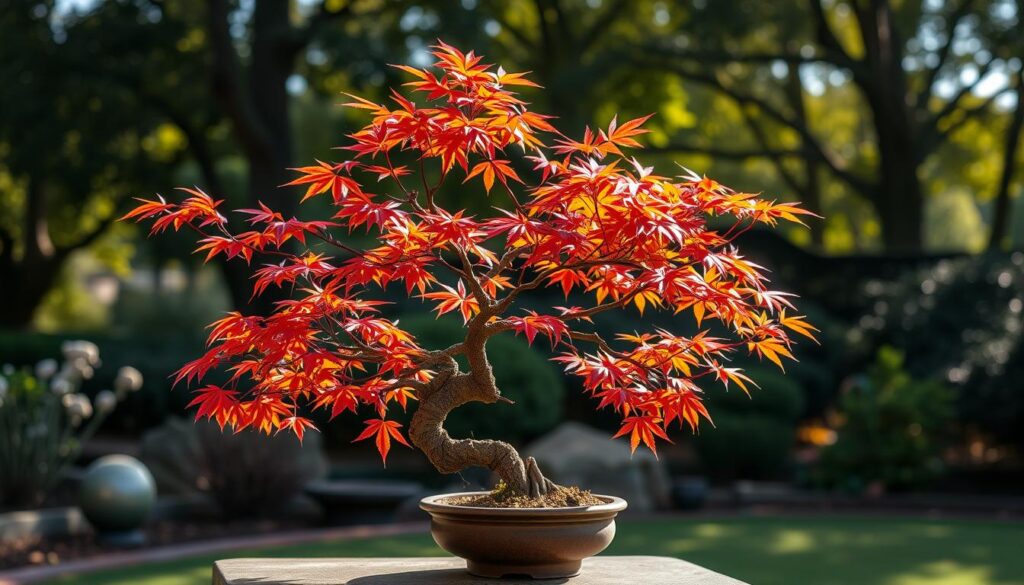
Whether you’re new to bonsai or an experienced enthusiast, the value of a japanese maple bonsai is clear. With proper care, these trees can become valuable possessions. They offer a unique and rewarding investment opportunity.
Shipping and Handling Premium Bonsai
Shipping premium bonsai maple trees needs special care to keep them safe. At our bonsai maple nursery, we pack them carefully to avoid damage. For valuable trees, we suggest picking them up or using a special courier service.
Our team works hard to prepare each bonsai maple for shipping. We wrap the branches and secure the root ball. Then, we put the tree in a strong, custom box. This way, your tree will arrive in perfect shape, ready to be part of your collection.
| Shipping Service | Delivery Time | Cost |
|---|---|---|
| Standard Ground Shipping | 7-14 business days | £25.00 |
| Expedited 2-Day Shipping | 2-3 business days | £45.00 |
| Nursery Pickup | Same-day | Free |
For our most valuable bonsai maple trees, we suggest our premium shipping or picking them up. This way, your tree gets the best care. Our team aims to make shipping easy and worry-free, so you can enjoy your new bonsai maple.
“The level of care and attention to detail in the shipping process is truly impressive. My bonsai maple arrived in perfect condition, and I couldn’t be happier with my purchase.”
Year-Round Beauty of Maple Bonsai
Japanese maple bonsai trees change with the seasons, delighting fans all year. In spring, they come alive with bright, new leaves. These leaves can be red, green, or a mix, symbolizing new life and energy.
Spring Growth Patterns
The leaves of acer palmatum bonsai open up, revealing their detailed patterns and colors. This time of year is special, showing off the tree’s beauty and colors. Fans look forward to seeing the trees grow and change.
Autumn Color Display
In autumn, maple bonsai trees change color dramatically. Their leaves turn into a beautiful mix of reds, oranges, and yellows. This is a big event in Japan, known as “momijigari,” where people enjoy the leaves’ short-lived beauty.
